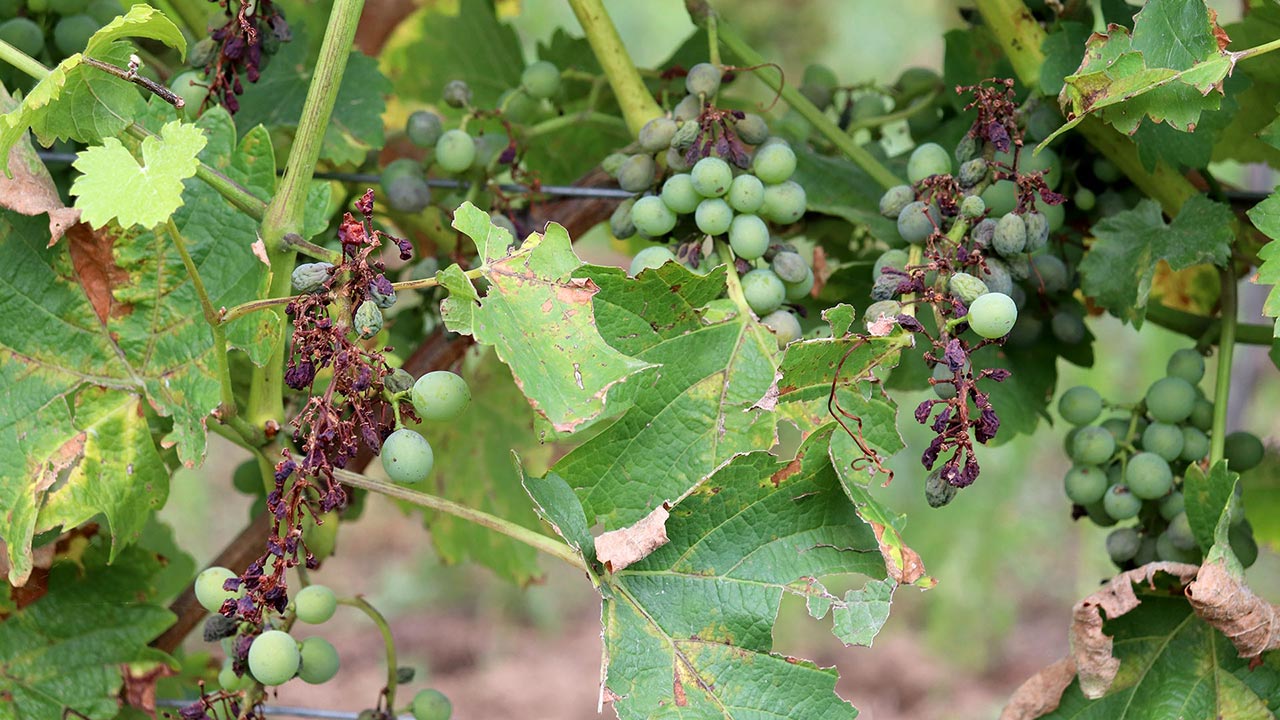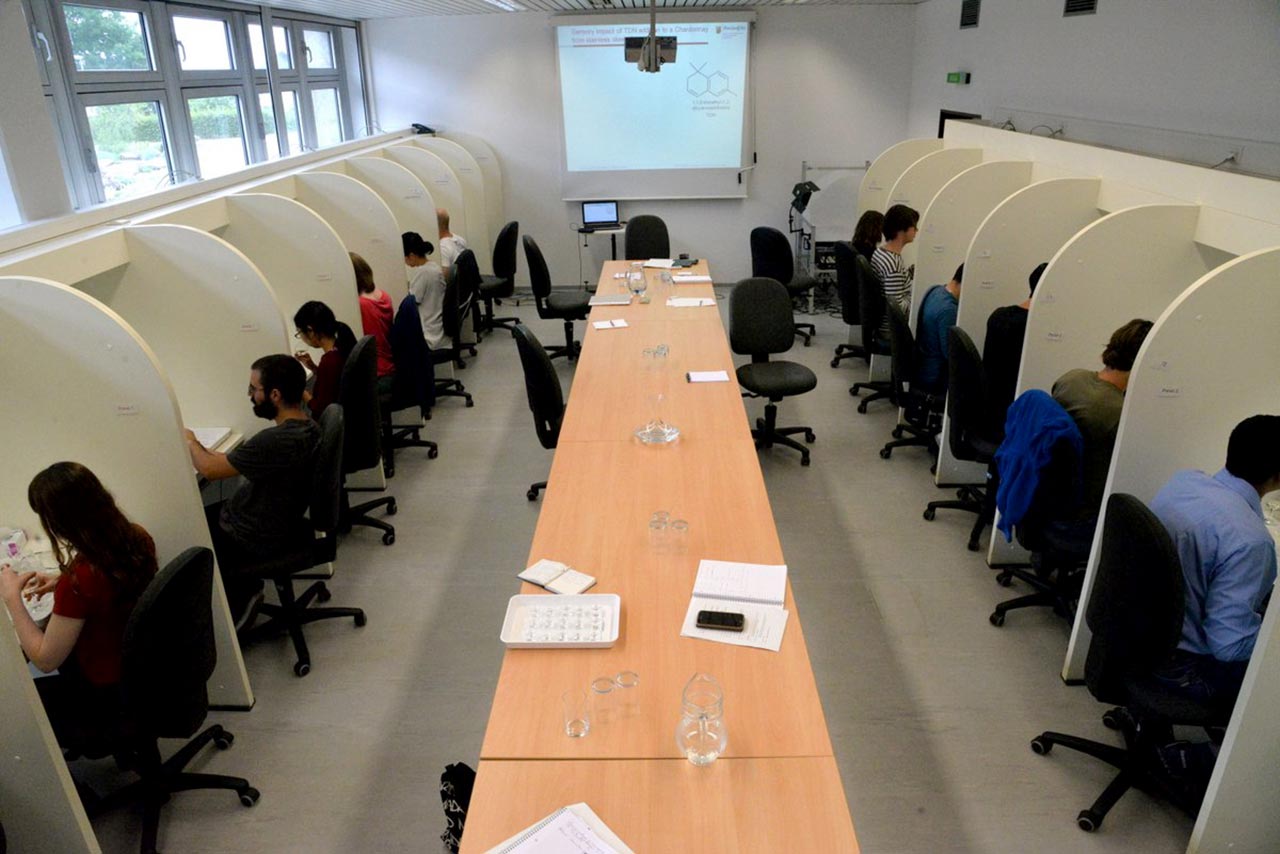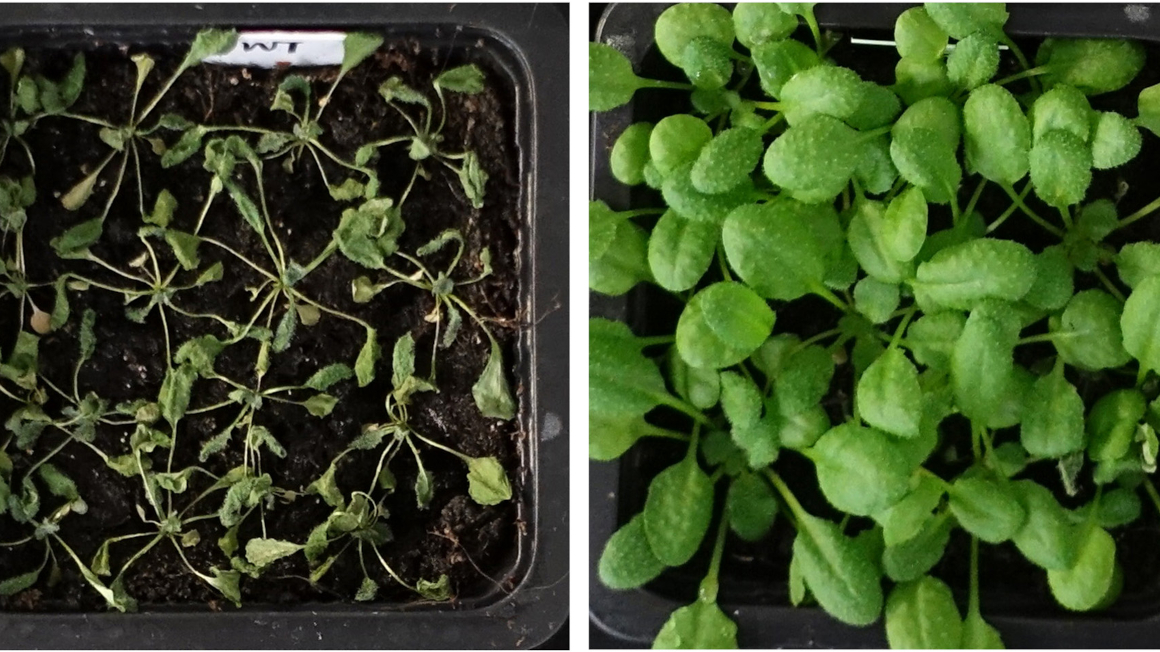
The background to the SelWineQ research project goes back to the colonisation of North America by Europeans: at that time, returning emigrants unintentionally brought powdery and downy mildew to Europe. Since then, these fungal diseases have plagued the native grapevines, among others, because unlike their American relatives, which have been able to adapt to the pathogens over millions of years of evolution, European vines have practically no natural resistance to the fungus from overseas. Around 1870, the disease destroyed a good 70% of French vineyards. Since then, breeders have been trying to cross resistance from American vines into European vines.
‘You can't just grow the vines from the USA here,’ says Ulrich Fischer from the Institute of Viticulture and Oenology at the Rhineland-Palatinate Rural Service Centre, who is coordinating the research project. ‘Good wines - and also white grapes - are the result of 3,000 years of cultivation and selection in Europe. This has not happened in North America during this period.’
EU wants to save 50 per cent of pesticides
However, winegrowers cannot continue to rely massively on plant protection products in order to secure the yield of European vines: ‘Agriculture should work more gently and sustainably,’ emphasises Fischer. ‘Part of the EU's Green Deal is to reduce the use of plant protection products by 50%.’ To achieve this, more partially resistant crops need to be planted.
Resistance breeding in viticulture has existed in Germany for around 60 to 70 years. ‘But the wine quality of the old varieties is quite mediocre,’ says Fischer, pointing out a key problem. In addition, these varieties are often far removed from the resistance target: ideally, a vine should have at least three different resistance genes for each relevant disease. ‘If one resistance then breaks down because the pathogen adapts, the second or, if necessary, the third resistance mechanism would be used,’ explains the oenologist. These crosses of wild varieties with resistance properties and susceptible quality vines are called PIWIs (meaning fungus-resistant). At present, PIWIs have one resistance mechanism for some pathogens and two for others. ‘So we still have a lot of work ahead of us,’ says Fischer.
Twelve years until it is clear whether a grape variety is any good
This might not be so bad if wine were an annual plant like most cereals. Then, the result of breeding could be seen in the quality of the grains after just a few months. But a new wine cross must grow for five years before the first liter of wine can be produced from its grapes. If this trial proves successful, the crossbreed can be cultivated on a larger scale. These plants also have to grow for five years. So to have two or three vintages of wine that have grown on different soil and in different weather, it takes at least twelve years from the initial idea of crossing. “Only then can we say: this is a good wine, we can recommend it, plant this grape variety,” summarizes Fischer.
This is where the SelWineQ project, which is already in its third funding phase and has seven years behind it and two to go, comes in. “We want to halve the time from breeding to cultivation,” says the project coordinator. “If I have to have each cross in the program for twelve years before I can say it's a good wine, I'm limiting the field capacity.” However, if you could tell in the first year whether it has the potential to produce good wine later on, you could sort out the bad half of the crosses straight away and have half the cultivation area free again for new crossing experiments.
What are the genetic criteria for a good grapevine?
“We want to use genetic markers to determine whether a two-centimetre plant has the genetic prerequisites for good or poor quality,” says Fischer, who is aware of how ambitious the undertaking is. This is not so much due to the technology, as breeders already use the same method to check whether resistance genes have been successfully transferred to a new cross. The challenge for SelWineQ lies much more in the question: What constitutes a good wine genetically?
The researchers are working on three levels. Firstly, they are looking at the genes that produce certain aromatic substances. “We know the flavorings for floral, fruity or exotic,” says the researcher. “There are also negative aromas such as unripe green peppers or acacia, the scent of which is sometimes used to flavor toilet blocks.”
Project overview
The SelWineQ project (“Predictive breeding for wine quality”) began in 2016. The third funding phase runs from February 2023 to January 2026. The Federal Ministry of Education and Research is providing around 1.65 million euros for this phase.
Involved in the project are:
- The JKI Sibeldingen, which carries out the breeding and propagates and plants out the vines. The JKI also analyzes the ingredients of the vines and grapes and produces the 200 small batches of wine each year. Last but not least, the researchers correlate sensory descriptions with genome segments.
- The DLR Rheinpfalz prepares the wine sensory analysis and tastes 300 wines a year with twelve people – even the bad ones. The researchers analyze the aromatic substances and create models to predict wine quality from sensory data.
- The Heidger Institute, a private wine laboratory, analyzes the metabolic products of wine plants. From over 6000 signals, the researchers have identified around 20 that are helpful for the prediction model. The institute is also working out the material causes of each signal so that the model does not end up being a black box.
At the second level, 15 tasters taste the wines. They are not asked whether they like the wine or not. “Everyone varies,” says Fischer. Instead, the tasters use a scale to assess criteria such as fruitiness, bitterness or acidity. To ensure that this is done uniformly, the test subjects are calibrated to a certain extent: they are given standard liquids that give them guidance on what a 1, 5 or 10 should mean on the acidity scale, for example.
The third level took place outside the research project. Here, consumers say which wines they like. This showed that PIWIs are just as well received and sometimes even better than Riesling, Sauvignon Blanc or Muscat, for example. “We made wines from the same field over seven vintages,” explains Fischer. After all, the researchers were not looking for random hits, but for wines with a stable quality rating. The basis for this was the evaluation scheme of the International Organization of Vine and Wine OIV.
Characteristics should be independent of climate and soil
The structure of the experimental cultivation is probably unique in the world. Five grapevines from the parent plants and five grapevines from 150 “children” of these parents are growing in two fields - in the Southern Palatinate and in the Palatinate Mittelhaardt. As a result, the vines experience different weather conditions and soils. Ultimately, the results of the project should lead to varieties that work not only in a vineyard in the Palatinate, but also in France or Italy. A third field is used to validate the correlations found under different conditions.

If some crosses prove to be particularly good grapevines over the years, and others prove to be particularly bad, the researchers start working on the genome. Which genome segments do the good vines have in common, and which do the bad ones? Where do good and bad wines differ? “We have succeeded in finding the corresponding markers,” reports Fischer. Good wines not only have different aromatic substances, but also have them in different concentrations. This does not make it possible to predict silver or gold wines, but it does make it possible to separate the better from the worse half. Very detailed genetic maps of the 19 chromosomes of each cross also make it easier to work with the material later in breeding in order to cross in further resistances.
Recognizing good wines by their metabolites
Machine learning and statistical models are also used to predict the quality of a wine based on its metabolite composition, thus eliminating the need for sensory testing through tasting and providing biochemical insights. “Our models are so good that they classify all but two of the 60 wines that are to be classified with worst and best cases correctly,” reports Fischer. This even applies to new wines with which the model has not been trained.
In the further course of the project, the researchers want to find out which enzymes and processes are linked to the marker genes, for example. “But that's more for science than for production,” says Fischer.
Valid markers for good red wines identified
“We are crossing many system boundaries in the project,” emphasizes the coordinator. By this he means the long way from genetic markers to satisfactory wine enjoyment. “A wine for 300 euros and one for 3 euros can have exactly the same sugar weight or produce the same yield as a vine.” Identifying characteristics in the genetic material of a plant that can be used to describe a good wine was a bold goal. “We are proud to have found valid and stable markers,” says Fischer happily. Although the work initially only related to white wines, “we have also provided the blueprint for red wines”.
Author: Björn Lohmann


